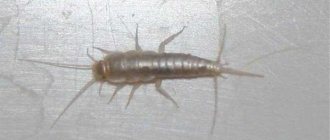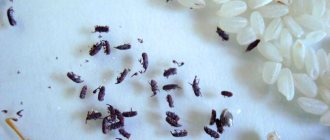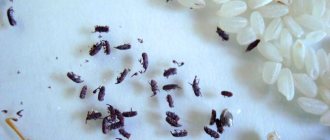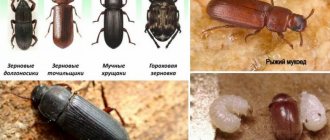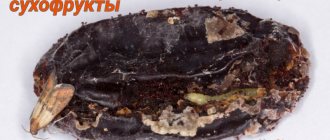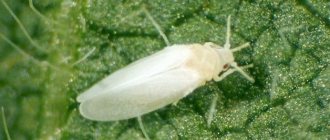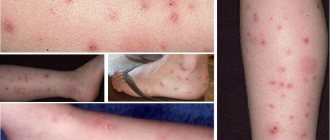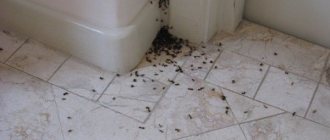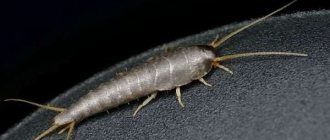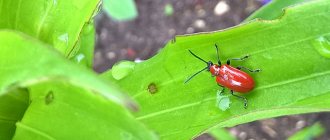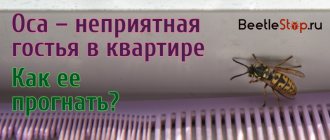Exotic orchids, previously unknown in our country, are increasingly being bred by fans of this flower on their windowsills. Despite the external vulnerability and fragility of the roots, these plants easily adapt to new conditions and tolerate the dry climate of apartments well. However, they are also susceptible to diseases and attacks from harmful insects. The most common one is the mealybug.
There is a lot of information about this pest on the Internet, accompanied by photos and videos. What to do if a mealybug appears on an orchid, how to get rid of it using the most effective methods - find out from this article. It is important to remember that it is impossible to cure a plant from a parasite. You just have to fight it: remove it, destroy it, and then take careful precautions so that it doesn’t appear again.
What insects can appear in the soil?
A wide variety of insects can live in the substrate: wood lice, millipedes, spiders, ants, cockroaches, snails. The ones listed below manifest themselves most often.
Thrips
Thrips are small black creatures, sneaky and fast, almost elusive . As they move, they leave a trail behind them - silvery paths and many black dots on the leaves.
Fools
They are typical inhabitants of moist substrates. Most often, their presence is extensive in orchids that grow in moss. They are also extremely fast and nimble.
Podurs cause very significant damage to the plant, sucking out vital juices, as well as gnawing young and fresh shoots, not allowing the plant to develop and grow normally. They deteriorate the overall health of the flower.
White bugs on an orchid - description of the pest
Mealybugs are scaly bugs that feed on leaf sap, causing stunted or distorted growth and yellow and fallen leaves.
These small white bugs that appear on flowers are found during new growth, along the stem and at the junctions of leaves, but are sometimes found in different places on the plant.
Mealybug damage is not as quick or destructive as spider mites on houseplants.
But if the white bug infestation is left untreated, the plant will eventually die. Although it usually takes them a lot of time to destroy the flower.
Mealybugs are tiny white bugs on house flowers and often appear as white fuzzy particles on plant leaves and stems. They may also be brown or cream in color in immature stages.
They don't look like insects at first glance and are most often mistaken for fungus or mold rather than insects.
If the white bugs you see on houseplants look more like tiny white flies that fly around when the plant is disturbed, then they are whiteflies and not mealybugs. Don't confuse them.
The complete life cycle of a mealybug is about 7-10 weeks. It takes 7 – 14 days for the eggs to hatch into an insect, and then another 6-9 weeks for them to develop into adults.
Mealybugs have multiple generations and their life cycles can overlap, meaning that once they emerge, the population can grow very quickly.
Because the eggs and bugs are so small, it takes some time for the population to become noticeable enough. Most people don't notice mealybugs on their pets until they become too numerous.
Consequences for the plant of the presence of such pests
A large number of pests affect almost everything: they suck the juice out of the plant, and lay larvae in the root system, which in turn grow and use young roots and shoots of leaves as food.
Among other things, insects also affect the appearance by destroying foliage. Therefore, it is very important to know where small midges and other bugs in the soil come from and how to get rid of them.
Signs of defeat
It is easy to determine that an orchid is infested with pests by its white fluffy coating:
- leaves, peduncles, flowers and buds will be dusted with white fluffy dust and severely deformed;
- large colonies of bugs appear more often where the skin is thinner;
- the phalaenopsis orchid needs access to light to the roots, so it is grown in transparent pots, through the walls of which you can see white bugs in the ground;
- leaves and peduncles are covered with sticky honeydew;
- white bugs love tender young orchid leaves, so the colony can be located at the growing point;
- feeding on the juice of the flower, the bugs release toxic substances into the pulp of the leaves;
- When replanting an orchid, white fluffy lumps are visible in the soil.
Signs of an orchid being affected by a mealybug
Why might they appear in the ground?
To a large extent, pests reach the plant through the soil. After all, one way or another, the soil contains quite a lot of different organisms that initially live there because of the comfortable environment for reproduction and existence.
Therefore, when purchasing soil for a plant, you must be prepared for the fact that you will have to deal with pests located there. Moisture also actively helps bugs and midges to reproduce, so you should not overwater the plant, because this can only provoke pests even more.
Fighting methods
At the early stage of infection, it is not difficult to cope with the pest; it is enough to use folk or mechanical means available at any time, even to a novice gardener.
Severely damaged orchids can only be saved by chemical treatment; a dying plant simply does not have the time or energy for the rest.
Mechanical
In this way, single insects are removed from the orchid. It involves removing insects and their eggs manually.
At the very beginning of infection, there is still a chance to clean the entire plant with a cotton swab dipped in alcohol or soapy water.
Be sure to remove and destroy the most heavily infected parts of the plant. The leaves are cut in half along their entire length, then removed from the growing point.
To destroy a male, unlike a female that can fly, it is enough to attach adhesive tape next to the affected plant.
Carry out a thorough wet cleaning of the area where the pot with the infected orchid is located.
People's
The method is suitable, but not at the last stage of infection. Spraying is carried out with home-prepared solutions every 3-4 days.
Effective infusions:
- from cyclamen tubers (pieces of tubers are boiled and kept for 24 hours);
- from chopped garlic (a head of garlic per 0.5 liters of water);
- from tobacco crumbs (100g of tobacco pour 1 liter of boiling water, leave for at least 5 hours).
A thick soap solution (tar soap) also has a detrimental effect on the pest.
All this is accessible even to a novice gardener, but you should not hope to destroy parasites in one spraying.
Attention! It is convenient to apply the prepared solutions to damaged areas with a soft brush.
It may be necessary to carry out several or complex treatments.
Chemical
Spraying with systemic insecticides has a positive effect, but they try to use them only as a last resort. If the situation with a pest has reached a critical limit, there is no question about the rationality of using chemical protection agents. It is urgent to save the tropical beauty.
The difficulty lies in the fact that white bugs of different ages and at different stages of development can be present on an orchid at the same time. In this regard, processing is carried out in several stages.
To completely destroy the population, it is necessary to get rid of each wave of hatched scale insects. You will need at least 3–4 treatments every 3 weeks.
Oil preparations are applied to areas affected by white bugs (oil impedes the process of photosynthesis).
After treatment, plants should absolutely not be placed in direct sunlight. There is a possibility of burning the treated areas.
The use of chemical control agents is carried out in compliance with safety rules and strictly according to the instructions.
What should you avoid in insect control?
If you notice that the condition of your plant has worsened, then do not panic and take on all methods at once. Clearly identify the problem based on symptoms and approach treatment wisely . Timely intervention will definitely help save the life of your flower. You should not overuse various types of chemicals, because an orchid is a delicate flower.
There is no need to experiment with different methods of struggle; if one specific remedy is chosen, then it should be used to the end.
What to do if pests are found in the soil?
Insecticide.- Laundry soap for soap solutions (insecticidal safe).
- If the damage was very strong, add spraying to the alcohol and soap treatment with a special solution - chemicals purchased at a flower shop for pest control, for example: Aktara, Aktellik, Fozalon, Fitoverm.
- Agravertine is a weak-acting drug (5 ml per 1 liter of water, often requires re-treatment).
- BI 58 is a strong preparation with universal action (30 ml per liter of water, a single treatment is enough).
Step-by-step instructions on how to fight
With midges
The pest control process involves:
- If insects are found, immediately treat the orchid and the substrate, first rinse under running water, then, based on the species that has colonized the area, disinfect it if necessary.
- It is also necessary to spray the substrate and the lower part of the plant with phytoverm according to the instructions twice with an interval of 7-10 days.
- Repeat the procedure twice after 7-8 days to be sure of the precise destruction of small midges and a favorable soil structure for the plant.
With white bugs
- Garlic solution helps very well in pest control. To do this, chop two heads of garlic and add a liter of water, place in a cool, dark place to infuse for about 5-7 days. Afterwards, strain the resulting infusion by half with water and spray the plant.
- To get rid of voracious bugs that harm the plant, changing the climate to one unfavorable for them usually helps.
- In greenhouses, humidity is reduced, because it is moist soil that is extremely favorite for all pests to reproduce.
If this is not enough, then more effective methods are used using mechanical traps.- Most often, the most effective method is to use bait.
You should put bait (a piece of cucumber, for example) on the surface of the substrate and then watch for a certain period of time, waiting to see if someone will come to eat it. Some people put a regular saucer filled with beer (beer trap), preferably a dark one. The aroma attracts some species of inhabitants, allowing them to be caught. This procedure allows you to manually catch large pests such as snails or spiders. It is worth repeating the harvest until the harmful guests completely disappear, and also periodically check their presence in this way.
The main thing is not to forget about the bait, not to leave it for too long, so that it does not mold or rot, causing other diseases of the delicate flower to occur.
How to get rid of parasites?
If there is any suspicion of the presence of insects on phalaenopsis or in the substrate, the following steps must be taken:
- The orchid is placed away from other flowers, moving it to another room.
- Flowers that were near the infected phalaenopsis are quarantined for several days. At this time, you should carefully monitor their condition.
- The orchid is carefully inspected and any pests found are removed. Damaged areas of greenery are cut off, sprinkling the sections with crushed coal or antiseptic.
- The flower pot is immersed in water for a few minutes. This way you can get rid of insects that float to the surface of the water.
- The plant is thoroughly wiped with a sponge generously soaked in soapy water. For varieties with dense leaves, you can use alcohol, but be careful not to burn the greens during the procedure.
- Change the top layer or the entire substrate. Sometimes you need to change the pot too.
Reference! If pests were detected at the first stage of settlement, then these procedures will be sufficient.
Methods of control and treatment
If a massive colony of pests with larvae is detected, the above procedures will not help. In such a situation, more drastic methods of controlling parasites will be required. These include:
- chemical treatment;
- treatment with folk remedies;
- use of biological drugs.
Prevention
To avoid new infections of the soil cover by various pests and maintain the health of the entire plant, you should monitor the condition of the plant. It is necessary to carry out preventive actions :
- Standing near plants with a solution of Itoverm or Actellik.
- It is extremely important to keep the inside and outside clean, so it is necessary to wash the substrate and wipe the leaves to prevent the bugs from finding a favorable place to live.
- The place where the orchid stands must always be kept clean, then the plant will never be infected with podura or other insects that are harmful to home flowers.
If you become the happy owner of an orchid, do not forget that your new family member may also get sick, which will negatively affect both the other inhabitants and you, because you will not get the same amount of aesthetics that you were hoping for if your flower is exposed to pests, therefore, be attentive and caring so that the color of your plant pleases you for as long as possible .
We recommend that you look at our other materials on what to do and how to get rid of orchid pests such as mealybugs, scale insects, mites, including spider mites.
What to do if white bugs appear on an orchid?
When tiny white hairy beetles or bugs start appearing on your orchids, it's time to get acquainted with mealybugs.
It is right to worry about them, since they do not just rest innocently on the leaves, but burrow into the plant and diligently drink its juices. A severe infestation of these beetles will kill your pet, and because they multiply quickly, they easily get out of control.
White furry bugs appeared on the orchid
The entire life cycle of mealybugs takes only a couple of weeks, so there are more than eight generations per year.
The insects that can be seen are the females, which are flat, oval creatures with a white, waxy or thread-like covering. In most species, tiny, winged, short-lived males fertilize females, who then lay eggs.
The young of both sexes, known as mealybugs, are so tiny that they are difficult to spot as they feed and grow, shedding their skins. Until they become either winged males or slow-moving females.
White bugs may have been on the plant when you purchased it. They could also be on some other orchid or other houseplant in the collection. Or tiny pests could be blown through the window by the wind.
Small bugs are often overlooked at the beginning of an infestation because the eggs and caterpillars are tiny and the adults tend to stay in areas where they are not seen, on the underside of stems or in deep crevices. Most varieties that feed on orchid leaves can also attack the roots.
